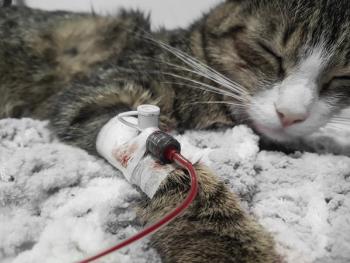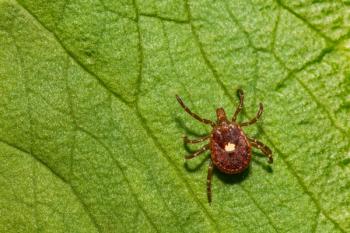
Effects of Age and Breed on Hematological and Biochemical Test Results in Young Miniature Schnauzers and Labrador Retrievers
In a longitudinal study of young miniature schnauzers and Labrador retrievers, age and breed had statistically significant effects on hematological and biochemical parameters during the first year of life.
In a longitudinal study of young miniature schnauzers and Labrador retrievers, age and breed had statistically significant effects on hematological and biochemical parameters during the first year of life. Understanding age-related changes in these parameters will help veterinarians interpret clinical data in young dogs, say the authors. The study was published in
The study included 25 miniature schnauzers and 24 Labrador retrievers born and raised at the WALTHAM Centre for Pet Nutrition (Leicestershire, United Kingdom). After weaning, the dogs were fed a standard commercial dry canine diet supplemented with various levels of vitamin A as part of a
Investigators analyzed fasted blood samples drawn at 8, 10, 12, 14, 16, 20, 26, 36, and 52 weeks of age. All dogs were neutered between 36 and 52 weeks of age. One Labrador retriever was removed from the study after being diagnosed with a congenital kidney defect at 9 months of age; data from this dog were not used in the analysis.
Age significantly affected all hematological and biochemical parameters in both breeds. Notable age-related results included the following:
- White blood cell count decreased over time in both breeds, with the largest drop occurring between 8 and 14 weeks.
- Red blood cell count, hemoglobin concentration, hematocrit, mean corpuscular volume, and mean corpuscular hemoglobin all increased over time in both breeds.
- Platelet count increased up to week 12 and then decreased until week 52 in both breeds.
- Plasma protein, albumin, urea, and creatine concentrations increased over time in both breeds.
- Alanine aminotransferase activity increased with time in both breeds, reaching a plateau at 20 weeks in miniature schnauzers.
- Alkaline phosphatase activity decreased with age in both breeds.
- Plasma calcium and phosphate levels decreased over time in both breeds, with the largest drop after 20 weeks.
Breed and the breed-age interaction significantly affected all parameters except hemoglobin level. Significant breed-related findings were as follows:
- Mean corpuscular volume, mean corpuscular hemoglobin, plasma protein, and plasma albumin were higher in miniature schnauzers than in Labrador retrievers.
- Platelet count, alkaline phosphatase activity, and plasma phosphate concentration were higher in Labradors than in miniature schnauzers.
- Creatine levels were higher in Labradors than in miniature schnauzers beginning at week 26.
- Plasma triglyceride levels were higher in miniature schnauzers than in Labradors between weeks 20 and 36.
Other
Breed-related differences in test results have been
The study revealed no differences in test results between male and female dogs, which agrees with the results of other studies, say the authors. They did not investigate the possible effects of sex hormones on hematological values (suggested by previous studies) because all of the dogs were neutered and there was no control group of intact dogs.
The study was funded by the European Pet Food Industry Federation and Mars Petcare. Three of the authors are employed by Mars Petcare.
Dr. Laurie Anne Walden received her doctorate in veterinary medicine from North Carolina State University. After an internship in small animal medicine and surgery at Auburn University, she returned to North Carolina, where she has been in small animal primary care practice for over 20 years. Dr. Walden is also a board-certified editor in the life sciences and owner of Walden Medical Writing, LLC. She works as a full-time freelance medical writer and editor and continues to see patients a few days each month.
Newsletter
From exam room tips to practice management insights, get trusted veterinary news delivered straight to your inbox—subscribe to dvm360.




